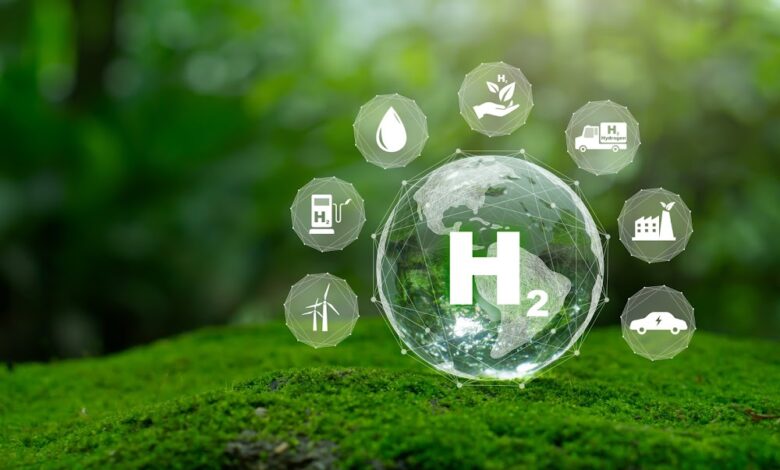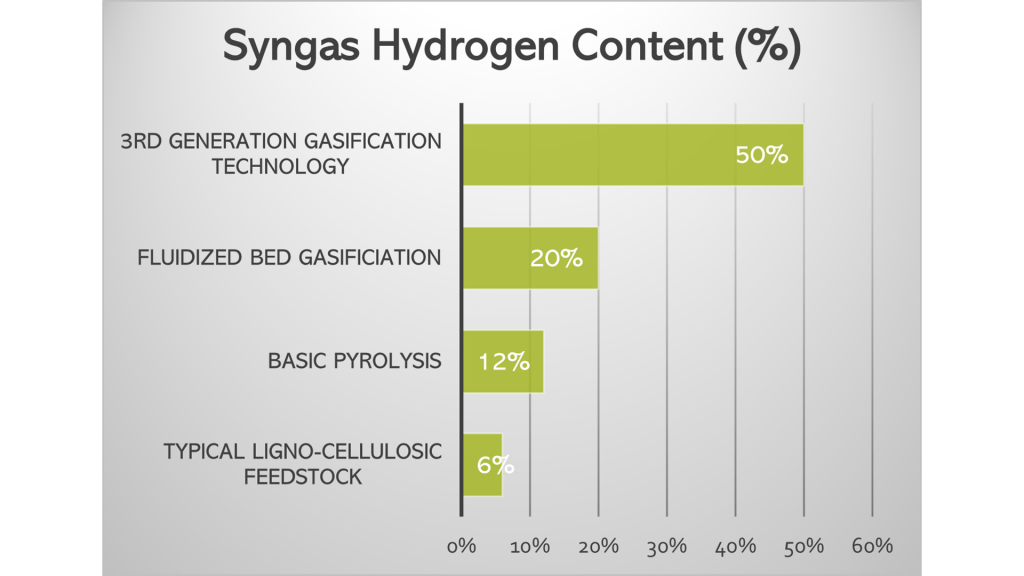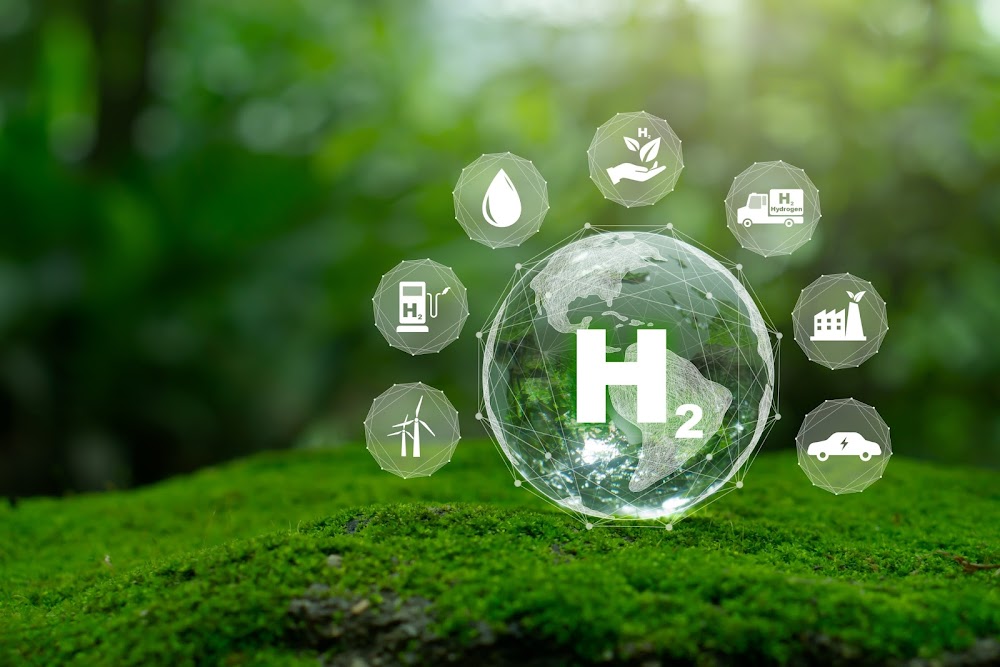
Green Hydrogen A Climate Solution
Green hydrogen climate change is a rapidly emerging field, promising a sustainable path towards a cleaner energy future. This exploration delves into the production, applications, and challenges surrounding this revolutionary technology. From its role in reducing emissions to the potential for decarbonizing industries, green hydrogen presents a compelling alternative to traditional fossil fuels.
This detailed overview explores the multifaceted aspects of green hydrogen, from its production methods using renewable energy to its diverse applications across transportation, industry, and heating. We’ll also examine the hurdles to overcome, the infrastructure needs, and the global landscape of green hydrogen development. Finally, we’ll consider the societal impacts and the potential for green hydrogen to contribute to a more sustainable future.
Introduction to Green Hydrogen: Green Hydrogen Climate Change

Green hydrogen is a clean energy carrier produced through the electrolysis of water using renewable energy sources. This process avoids the emission of greenhouse gases, making it a crucial component in the global transition towards a sustainable energy future. It can be stored and transported, offering a potential solution for decarbonizing sectors like transportation, heating, and industry.The production of green hydrogen relies on splitting water molecules (H₂O) into hydrogen (H₂) and oxygen (O₂) using electricity.
This process is known as electrolysis. Crucially, the electricity powering this process must come from renewable sources, such as solar, wind, or hydropower, to ensure the environmental benefits. This contrasts with other hydrogen production methods that rely on fossil fuels.
Green Hydrogen Production Methods
The process of creating green hydrogen predominantly utilizes electrolysis. This involves passing an electric current through water, causing the water molecules to split into hydrogen and oxygen. Different types of electrolysis technologies exist, each with its own advantages and disadvantages.
- Electrolysis using renewable energy sources, such as solar or wind power, is a key method for producing green hydrogen. This approach ensures that the hydrogen production process is carbon-free, aligning with environmental goals. The efficiency of this process varies depending on the specific electrolysis technology and the renewable energy source.
- Alkaline electrolysis is a mature technology that uses an alkaline electrolyte solution to drive the electrolysis process. It’s relatively inexpensive to set up but has lower energy efficiency compared to other methods.
- Proton exchange membrane (PEM) electrolysis is another prominent method, known for its higher energy efficiency and faster reaction times. This technology is becoming increasingly popular due to its potential for scaling up production.
- Solid oxide electrolysis (SOEC) is a more advanced technology with high energy efficiency and operational temperatures. It offers the potential for high-temperature applications and can be integrated with other thermal processes.
Key Differences Between Hydrogen Types
Understanding the distinctions between green, grey, and blue hydrogen is crucial for evaluating the environmental impact of hydrogen production.
| Type | Production Method | Environmental Impact |
|---|---|---|
| Green Hydrogen | Electrolysis using renewable energy sources | Zero greenhouse gas emissions |
| Grey Hydrogen | Steam methane reforming using natural gas | High greenhouse gas emissions |
| Blue Hydrogen | Steam methane reforming using natural gas with carbon capture and storage | Reduced greenhouse gas emissions, but still some emissions |
History of Green Hydrogen Development
The development of green hydrogen has progressed over time, driven by advancements in electrolysis technology and the increasing availability of renewable energy sources.
| Year | Milestone |
|---|---|
| 1800s | Early experiments with electrolysis began. |
| 1960s – 1980s | Research and development focused on various electrolysis methods. |
| 2000s | Increased awareness of climate change and the need for sustainable energy sources. |
| 2010s | Significant advancements in renewable energy and electrolysis technologies, driving green hydrogen production. |
| 2020s | Scaling up green hydrogen production and exploring diverse applications. |
Green Hydrogen and Climate Change Mitigation
Green hydrogen, produced through electrolysis using renewable energy sources, offers a compelling pathway to decarbonize various sectors and mitigate the effects of climate change. Its potential to replace fossil fuels in energy-intensive industries and transportation holds immense promise for a cleaner future. This exploration delves into the specifics of green hydrogen’s role in reducing greenhouse gas emissions and its potential to transform our energy landscape.The transition to a hydrogen economy is not without its challenges.
The current cost of producing green hydrogen is often higher than traditional fossil fuels. However, technological advancements and increasing economies of scale are steadily driving down production costs, making green hydrogen a more competitive alternative. This transition also requires significant investments in renewable energy infrastructure and hydrogen production facilities, necessitating careful planning and collaboration across governments and industries.
Green Hydrogen’s Role in Emission Reduction
Green hydrogen’s production process avoids the release of carbon dioxide (CO2) emissions unlike the production of hydrogen from fossil fuels. By replacing fossil fuel-based processes with green hydrogen, significant reductions in overall greenhouse gas emissions can be achieved. This emission reduction is crucial in mitigating climate change and achieving global decarbonization targets.
Green hydrogen is a promising solution for mitigating climate change, offering a clean energy alternative. While exploring innovative solutions like this, I’ve been captivated by the vibrant art scene in Los Angeles, particularly the work of cauleen smith artist los angeles. Her unique perspective on color and form really resonates with the need for fresh ideas to tackle the complex challenges of our time, much like the potential of green hydrogen to transform our energy future.
Environmental Impact Comparison
Green hydrogen’s environmental impact contrasts sharply with that of traditional fossil fuels. The production of green hydrogen, powered by renewable energy sources, doesn’t emit greenhouse gases during the process. Fossil fuel-based hydrogen production, on the other hand, releases significant amounts of CO2. This fundamental difference makes green hydrogen a considerably more environmentally friendly option.
Decarbonizing Various Sectors
Green hydrogen has the potential to decarbonize numerous sectors. Transportation, particularly heavy-duty vehicles and maritime transport, stands to benefit greatly. Furthermore, green hydrogen can revolutionize industrial processes, like steel production and ammonia synthesis, currently reliant on fossil fuels. Heating sectors also represent a significant opportunity for green hydrogen deployment.
Pathways to Large-Scale Deployment
Achieving large-scale deployment of green hydrogen necessitates a multifaceted approach. This includes substantial investments in renewable energy infrastructure to ensure a consistent supply of clean energy for electrolysis. Government policies and incentives play a crucial role in fostering innovation and driving down production costs. International collaborations are vital for sharing knowledge and best practices. The development of efficient hydrogen storage and transportation infrastructure is equally critical.
Potential Applications in Various Sectors
- Transportation: Green hydrogen can power fuel cell vehicles, potentially replacing gasoline and diesel-powered cars and trucks, especially in heavy-duty applications like buses and freight vehicles. This transition is crucial in reducing transportation emissions.
- Industry: Green hydrogen can replace fossil fuels in industrial processes like steel production, ammonia synthesis, and refining, significantly reducing emissions in these energy-intensive sectors. The adoption of green hydrogen in cement production is another notable example.
- Heating: Green hydrogen can be used as a clean fuel for heating homes and buildings, replacing natural gas or other fossil fuels. This transition to green hydrogen heating systems is crucial in reducing residential and commercial emissions.
Challenges and Opportunities
Green hydrogen, touted as a crucial element in decarbonizing various sectors, faces both exciting opportunities and significant hurdles. While the potential for a hydrogen-powered future is substantial, overcoming the current technological and economic limitations is vital for its widespread adoption. This section delves into the key challenges and opportunities surrounding green hydrogen, aiming to provide a realistic assessment of its potential impact.The transition to a green hydrogen economy requires a multifaceted approach, addressing technological limitations, economic viability concerns, and the need for supportive policies.
Understanding these challenges is crucial for developing effective strategies to overcome them and realize the full potential of this transformative technology.
Technological Challenges in Green Hydrogen Production
Green hydrogen production, reliant on renewable energy sources, faces technological hurdles. The efficiency of electrolysis, the process of splitting water into hydrogen and oxygen using electricity, directly impacts the overall cost and feasibility of green hydrogen. Developing more efficient and cost-effective electrolyzers, particularly those capable of operating at higher temperatures and pressures, is crucial. Material advancements are also essential, as current electrolyzer components, such as membranes and electrodes, are expensive and prone to degradation.Furthermore, optimizing the integration of renewable energy sources, like solar and wind, into the hydrogen production process requires sophisticated energy storage and grid management solutions.
Intermittency of renewable energy necessitates robust storage mechanisms to ensure a continuous hydrogen supply, adding another layer of complexity to the technological landscape.
Cost Barriers in Green Hydrogen Production
Currently, the cost of producing green hydrogen is significantly higher than that of conventional fossil fuel-based hydrogen. The high capital expenditure associated with electrolyzer installations, the need for renewable energy infrastructure, and the inherent inefficiencies in the production process contribute to this cost barrier. The price of raw materials used in electrolyzer manufacturing also plays a crucial role in determining the overall cost of hydrogen production.
This economic hurdle is a major deterrent for widespread adoption.For instance, the cost of renewable energy sources can vary depending on location, influencing the price of green hydrogen. Countries with abundant solar or wind resources may experience lower production costs compared to regions with limited renewable energy potential. These geographic variations underscore the need for localized solutions and tailored policies.
Economic Viability Compared to Other Energy Sources
The economic viability of green hydrogen hinges on its ability to compete with existing energy sources, particularly fossil fuel-based hydrogen. While the environmental benefits of green hydrogen are undeniable, its cost-effectiveness compared to conventional methods remains a significant concern. Currently, the price of green hydrogen often surpasses the price of gray or blue hydrogen, making it economically challenging to compete.However, declining costs of renewable energy technologies, combined with advancements in electrolysis, suggest that green hydrogen’s cost may become more competitive in the future.
Technological advancements and economies of scale are expected to drive down the cost of green hydrogen production.
Potential Economic Benefits of Green Hydrogen Adoption
The adoption of green hydrogen presents a vast potential for economic growth and job creation across various sectors. New industries focused on hydrogen production, storage, and transportation will emerge, leading to significant employment opportunities. Furthermore, the transition to green hydrogen can unlock substantial economic benefits by creating new markets for renewable energy and driving technological innovation.For example, the development of hydrogen-powered vehicles and industrial processes can create a new demand for hydrogen-related products and services.
This new market will spur investment in research and development, manufacturing, and infrastructure, fostering economic growth and competitiveness.
Policy Support Mechanisms
The acceleration of green hydrogen deployment requires robust policy support mechanisms. A comprehensive strategy encompassing fiscal incentives, regulatory frameworks, and research and development funding is essential.
Green hydrogen holds a lot of promise for mitigating climate change, offering a clean energy source. However, geopolitical tensions in the Middle East, particularly the ongoing conflicts in Iran, as detailed in this article about iran conflictos medio oriente , create significant hurdles for the global adoption of green hydrogen. These challenges need to be addressed for green hydrogen to truly fulfill its potential in combating climate change.
| Policy Area | Specific Support Mechanisms |
|---|---|
| Fiscal Incentives | Tax credits for green hydrogen production facilities, subsidies for hydrogen-powered vehicles, and investment tax credits for hydrogen infrastructure projects. |
| Regulatory Frameworks | Establishing clear regulations and standards for green hydrogen production, transport, and storage. Creating specific targets for hydrogen adoption in various sectors (e.g., transportation, industry). |
| Research & Development | Funding research and development activities focused on improving electrolyzer efficiency, reducing production costs, and exploring novel applications of hydrogen. |
Infrastructure and Policy
Green hydrogen’s journey to widespread adoption hinges critically on the development of robust infrastructure and supportive policies. Without a well-defined framework for production, transportation, and distribution, the potential of green hydrogen as a clean energy source remains largely untapped. Furthermore, incentives and regulations are vital to encourage investment and ensure a sustainable supply chain. This section delves into the essential infrastructure needs, the role of policy, and the existing initiatives globally.The development of a green hydrogen economy requires significant investments in new infrastructure.
Green hydrogen is crucial for tackling climate change, but it’s important to consider the entire picture. Just like how ethical sourcing matters when buying rare items like stranger letters—and this is something that’s getting a lot of attention, check out stranger letters purchase ethics for more on this—we need to ensure the production of green hydrogen isn’t contributing to environmental problems elsewhere.
Ultimately, a truly sustainable approach to green hydrogen production will be key to combating climate change effectively.
This includes establishing large-scale electrolysis facilities, pipelines for hydrogen transport, and storage facilities. Policies that encourage these developments are crucial to driving the transition. Existing policies and incentives can provide a framework for the deployment of this promising technology.
Infrastructure Requirements for Green Hydrogen
The infrastructure for green hydrogen necessitates a comprehensive approach, encompassing production, transportation, and storage. Large-scale electrolysis plants, powered by renewable energy sources, are fundamental for producing green hydrogen. Efficient pipelines and storage facilities are crucial for transporting and storing hydrogen, which is often a gas with a low density. This requires significant investments in infrastructure that can manage the handling of a potentially volatile substance.
Role of Policy in Promoting Green Hydrogen Development
Government policies play a pivotal role in fostering the growth of a green hydrogen economy. Policies that encourage investment in green hydrogen production, transportation, and utilization can significantly accelerate its deployment. Incentives, such as tax credits or subsidies, can stimulate private sector participation and encourage innovation. Regulation is also vital to ensure safety and environmental standards are met throughout the supply chain.
Examples of Existing Government Policies and Incentives Worldwide
Many countries are recognizing the potential of green hydrogen and are implementing policies to support its development. For example, some countries offer tax credits or subsidies for investments in green hydrogen production facilities. Others are providing financial support for the development of hydrogen-powered vehicles or other applications. These incentives are crucial in demonstrating the commitment to developing this promising technology.
- Germany’s National Hydrogen Strategy aims to establish Germany as a global leader in hydrogen technology.
- Japan’s strategy focuses on hydrogen as a key element of its energy transition and aims to develop a robust hydrogen economy.
- The United States has various initiatives supporting green hydrogen development, including research and development funding.
Potential Regulations Needed to Manage the Green Hydrogen Supply Chain
Establishing clear regulations is essential for ensuring the safety and environmental sustainability of the green hydrogen supply chain. These regulations should address the production, transportation, and storage of hydrogen, encompassing safety protocols, environmental impact assessments, and quality standards. Furthermore, robust regulatory frameworks can encourage innovation and ensure the ethical sourcing of renewable energy used for electrolysis.
Summary of National and International Strategies for Green Hydrogen Development
| Country/Region | Strategy Focus | Key Initiatives |
|---|---|---|
| Germany | Developing a comprehensive hydrogen strategy | Subsidies for hydrogen production facilities, investments in infrastructure |
| Japan | Promoting hydrogen as a key element of its energy transition | Research and development support, investment in hydrogen-powered vehicles |
| United States | Supporting green hydrogen development through various initiatives | Research and development funding, incentives for green hydrogen production |
| EU | Promoting a coordinated approach to hydrogen development across the bloc | Setting common standards, supporting investments in infrastructure |
Global Green Hydrogen Landscape
The global race to decarbonize is driving significant investment and innovation in green hydrogen production. This sector is rapidly evolving, with countries and regions vying for a leading position in this emerging market. Understanding the current trends, comparative development, and key players is crucial to grasping the potential and challenges of this transformative technology.The burgeoning green hydrogen market is characterized by a dynamic interplay of technological advancements, supportive policies, and economic incentives.
Countries are implementing various strategies to foster green hydrogen production, aiming to secure a competitive edge in the global energy landscape. The ultimate goal is to transition away from fossil fuels, reducing carbon emissions and mitigating the effects of climate change.
Current Trends in Green Hydrogen Production
Green hydrogen production methods are increasingly diverse, encompassing electrolysis powered by renewable energy sources like solar and wind. This approach is gaining prominence due to its potential for large-scale deployment and environmental friendliness. Furthermore, advancements in electrolysis technology are continuously reducing production costs, making green hydrogen more competitive with traditional energy sources.
Green Hydrogen Development Across Countries and Regions
The development of green hydrogen infrastructure is unevenly distributed across the globe. Some countries, like those with abundant renewable energy resources, are making significant strides in green hydrogen production. Others are focusing on research and development, laying the groundwork for future expansion.
Major Players in the Green Hydrogen Industry
Several companies and organizations are at the forefront of the green hydrogen revolution. These include major energy corporations, technology firms specializing in electrolysis, and established players in the renewable energy sector. They are actively involved in research, development, production, and deployment of green hydrogen solutions. Examples include companies like [Company A], [Company B], and [Company C], each contributing to the overall growth and development of the green hydrogen market.
Green hydrogen is touted as a potential solution to climate change, but its widespread adoption still faces hurdles. The shrinking snowpack impacting events like snow polo in St. Moritz, highlighted in snow polo st moritz climate change , serves as a stark reminder of the urgent need for sustainable energy solutions. Ultimately, finding a path forward for green hydrogen remains crucial in mitigating the broader climate crisis.
These players are often pioneers in establishing pilot projects and large-scale production facilities.
Future Outlook for Green Hydrogen Markets
The future of green hydrogen is bright, with significant potential for growth in the coming years. Continued advancements in technology, supportive government policies, and growing demand from various sectors will drive this expansion. The market is expected to become increasingly competitive as new entrants emerge, and established players invest further. A critical factor is the successful integration of green hydrogen into existing energy infrastructure.
Countries and industries must strategize to successfully transition from current energy sources to green hydrogen solutions.
Comparative Table of Green Hydrogen Production Capacity
| Region | Estimated Production Capacity (Gigawatts) | Key Drivers | Challenges |
|---|---|---|---|
| Europe | [Value, cite source] | Strong policy support, advanced electrolyzer technology | High initial investment costs, supply chain limitations |
| North America | [Value, cite source] | Abundant renewable energy resources, increasing government interest | Grid integration challenges, infrastructure development |
| Asia | [Value, cite source] | Large-scale renewable energy potential, government initiatives | Land availability, policy consistency |
| Other Regions | [Value, cite source] | Emerging potential in various regions | Specific regional challenges |
Green Hydrogen and Energy Security
Green hydrogen, produced through electrolysis powered by renewable energy, offers a compelling pathway to enhance energy security. It represents a shift away from reliance on volatile fossil fuel markets and potentially lessens exposure to geopolitical risks associated with importing energy. This transition presents a significant opportunity to diversify energy sources and build resilience against supply chain disruptions.The global energy landscape is increasingly complex, with geopolitical tensions influencing energy markets.
Countries are seeking ways to reduce their dependence on fossil fuel imports, bolstering national energy security, and fostering domestic energy production. Green hydrogen emerges as a key component in achieving these objectives.
Geopolitical Implications of Green Hydrogen Adoption
The adoption of green hydrogen can reshape global energy partnerships and alliances. Countries with abundant renewable energy resources are poised to become major exporters of green hydrogen, creating new economic opportunities and potentially influencing global trade dynamics. The transition to green hydrogen could lead to new international collaborations focused on the development of hydrogen infrastructure, electrolyzer technology, and the establishment of international standards for hydrogen production and distribution.
This collaborative effort would require strong international agreements and policies to ensure equitable access and avoid potential trade conflicts.
Role of Green Hydrogen in Reducing Dependence on Fossil Fuel Imports
Green hydrogen can play a critical role in reducing dependence on fossil fuel imports. A nation transitioning to green hydrogen production can drastically lessen its reliance on volatile international energy markets, fostering energy independence. This transition can be particularly impactful for countries heavily reliant on importing fossil fuels, allowing them to achieve energy security through domestic production and reduce their vulnerability to global price fluctuations and political instability.
For instance, a country with significant solar or wind resources can leverage these renewable energy sources to produce green hydrogen domestically, decreasing their dependence on imported fossil fuels.
Potential for Green Hydrogen to Create New Jobs and Industries
The green hydrogen sector presents a significant opportunity for job creation and industry development. From the manufacturing of electrolyzers to the construction of hydrogen refueling stations and the development of hydrogen-powered vehicles, the sector promises a wide range of employment opportunities. The growth of the hydrogen economy could lead to the development of new industries, including hydrogen storage, distribution, and utilization technologies, potentially driving economic growth and innovation.
Examples include the emergence of specialized companies focusing on hydrogen production, storage, and transportation. These new industries would contribute to economic diversification and create employment in various sectors, from engineering and construction to maintenance and operation.
Importance of Green Hydrogen in Diversifying Energy Sources
Diversification of energy sources is crucial for energy security. Green hydrogen complements existing renewable energy sources like solar and wind power, offering a flexible and storable energy carrier. This diversification allows for a more resilient energy system capable of meeting fluctuating energy demands. The ability to store green hydrogen provides a significant advantage over intermittent renewable energy sources, enabling a more reliable and stable energy supply.
This versatility is especially important in areas with inconsistent solar or wind availability, as hydrogen can be produced during periods of high renewable energy generation and used later.
Societal Impacts
Green hydrogen, while promising for climate change mitigation, holds significant implications for society. Its development and deployment will reshape energy landscapes, create new industries, and affect communities in various ways. Understanding these impacts is crucial for ensuring a just and equitable transition to a hydrogen-powered future.The societal benefits of green hydrogen adoption are substantial, ranging from economic opportunities to environmental improvements.
By creating new jobs and industries, it can boost economic growth and reduce reliance on fossil fuels. Furthermore, the reduction in harmful emissions from green hydrogen-powered industries and transportation can lead to improved public health and a cleaner environment.
Potential Societal Benefits
Green hydrogen’s potential to revitalize rural economies is a key societal benefit. Investments in green hydrogen production facilities can stimulate local economies through job creation, infrastructure development, and increased tax revenue. For instance, areas with abundant renewable energy resources could become hubs for green hydrogen production, attracting businesses and skilled workers. This economic stimulus could revitalize communities that have historically struggled with economic hardship.
- Economic Growth: Green hydrogen production and utilization can create a new wave of jobs in manufacturing, construction, transportation, and maintenance, stimulating economic growth. This includes the development of supporting industries like electrolyzer manufacturing, pipeline construction, and hydrogen refueling stations.
- Improved Public Health: Reduced reliance on fossil fuels translates to cleaner air and water, improving public health outcomes and reducing respiratory illnesses and other health problems associated with air pollution.
- Energy Independence: By reducing reliance on imported fossil fuels, countries can achieve greater energy independence and security, potentially leading to more stable energy prices and less vulnerability to global energy market fluctuations.
Potential Social Equity Concerns
The transition to green hydrogen must address potential social equity concerns to ensure a just and inclusive process. Disproportionate impacts on marginalized communities, such as those in proximity to new hydrogen facilities, require careful consideration. Concerns regarding job displacement in fossil fuel-dependent sectors must be addressed proactively.
- Environmental Justice: Ensuring that the environmental impacts of green hydrogen projects are distributed equitably is crucial. Communities located near facilities should not bear the brunt of potential negative impacts, such as increased noise or air pollution, without appropriate mitigation measures.
- Job Displacement: The transition to green hydrogen may lead to job losses in the fossil fuel sector. Targeted retraining programs and support for workers in declining industries are essential to facilitate a smooth transition and minimize social disruption.
- Access to Benefits: It is vital to ensure that the economic benefits of green hydrogen development are accessible to all members of society, and not just to a select few. Policies and regulations must be put in place to prevent the concentration of wealth and opportunity.
Contribution to Sustainable Development Goals
Green hydrogen production and use have the potential to contribute significantly to achieving several Sustainable Development Goals (SDGs). This includes improving energy access, promoting economic growth, and mitigating climate change.
- SDG 7 (Affordable and Clean Energy): Green hydrogen can offer a clean and sustainable alternative to fossil fuels, promoting access to affordable and clean energy sources, particularly in remote areas.
- SDG 8 (Decent Work and Economic Growth): Creating new jobs in the green hydrogen sector can contribute to decent work and economic growth, particularly in developing countries.
- SDG 13 (Climate Action): The transition to green hydrogen is a critical step in reducing greenhouse gas emissions and mitigating climate change, which is essential for achieving a sustainable future.
Potential Employment Opportunities
The green hydrogen sector presents numerous employment opportunities across various skill sets. From engineers and technicians to construction workers and maintenance personnel, the sector will require a skilled workforce.
- Engineering and Technology Roles: The development and operation of green hydrogen plants require a large number of engineers, technicians, and scientists to design, build, and maintain the facilities. This includes expertise in renewable energy, chemical engineering, and hydrogen technology.
- Construction and Infrastructure Roles: The construction and maintenance of hydrogen production and distribution infrastructure will require skilled workers in construction, maintenance, and logistics.
- Support Roles: Supporting roles such as logistics, administration, and marketing will also be vital to the success of the green hydrogen sector.
Potential Impacts on Local Communities
Green hydrogen projects can have significant impacts on local communities, both positive and negative. Careful planning and stakeholder engagement are essential to mitigate potential negative impacts and maximize positive outcomes.
- Positive Impacts: Green hydrogen projects can create jobs, increase tax revenue, and improve the local economy. The transition to cleaner energy can improve air quality and public health in affected communities.
- Negative Impacts: Potential negative impacts include land use changes, noise pollution, and increased traffic. Proper environmental impact assessments and community engagement are crucial to mitigate these concerns and ensure a just transition for local communities.
Illustrative Examples
Green hydrogen, while promising, requires concrete examples to illustrate its potential and challenges. This section presents a hypothetical project, analyzing its environmental, economic, and societal implications. Understanding such a project is crucial for assessing the viability and broader impact of green hydrogen initiatives.
Hypothetical Green Hydrogen Project: “Desert Dawn”
The “Desert Dawn” project is a large-scale green hydrogen production facility located in the Mojave Desert, California. This project leverages the region’s abundant sunlight for electrolysis.
Green hydrogen is crucial in tackling climate change, offering a clean alternative to fossil fuels. President Biden’s focus on infrastructure, as seen in his recent push for a decade of improvements in Wisconsin, taking on Trump and promoting a decade of infrastructure improvements in Wisconsin , is essential for the development and deployment of this technology. This investment in infrastructure, from renewable energy grids to hydrogen production facilities, will directly support the growth of a green hydrogen economy, ultimately accelerating the fight against climate change.
Project Location and Scale
The project is situated in the Mojave Desert due to its high solar irradiance and vast land availability. The facility will cover an area of 10 square kilometers, with an initial production capacity of 500 metric tons of green hydrogen per day.
Technology Employed
The project utilizes advanced, high-efficiency electrolyzers, powered by a concentrated solar power (CSP) system. This combination offers a high-capacity production method, with potential for future expansion. The CSP plants concentrate sunlight to heat molten salt, which drives steam turbines to generate electricity. This electricity powers the electrolyzers, splitting water into hydrogen and oxygen.
Environmental Benefits
The project aims to displace fossil fuel-based hydrogen production, significantly reducing greenhouse gas emissions. Quantifiable metrics include a reduction of 1 million metric tons of CO2 equivalent emissions annually. This reduction is calculated based on a lifecycle assessment, factoring in the energy consumption of the electrolyzers and the CSP system, as well as the environmental impact of alternative hydrogen production methods.
The project is expected to reduce water consumption in the area through efficient irrigation techniques, minimizing its overall environmental footprint.
Economic Benefits and Societal Impacts
The “Desert Dawn” project will create thousands of jobs during construction and operation. It will stimulate local economies through supply chain development and increased demand for related services. The project aims to provide affordable and sustainable hydrogen to the transportation and industrial sectors, reducing dependence on fossil fuels and promoting economic growth. This can translate to job creation in related sectors such as hydrogen fuel cell vehicle manufacturing and infrastructure development.
Potential Challenges and Risks
The project faces challenges associated with water scarcity in the desert region. Careful water management strategies are critical for minimizing the project’s environmental impact. Other challenges include land acquisition, permitting processes, and potential resistance from local communities. Technological advancements and innovation are essential to reduce the overall cost of production and improve efficiency.
Project Infrastructure Diagram, Green hydrogen climate change
[Visual representation of the project’s infrastructure would be a diagram here, showing the solar farms, CSP plants, electrolyzers, hydrogen storage, and distribution pipelines. The diagram would highlight the interconnections and flows of energy and materials. It would also illustrate the relationship between the project and the surrounding environment, including water resources and potential for environmental monitoring.]The diagram would clearly depict the various components of the project, including solar farms, CSP plants, electrolyzers, hydrogen storage facilities, and distribution pipelines.
Interconnections between these elements would be shown, highlighting the flow of energy and materials. The diagram would also include elements such as water sources, wastewater treatment, and potential environmental monitoring stations. This visual representation would give a clear overview of the entire system.
Closing Summary

In conclusion, green hydrogen holds significant promise for mitigating climate change and fostering a more sustainable energy sector. While significant technological and economic hurdles remain, the potential benefits are substantial. By fostering innovation, investing in infrastructure, and implementing supportive policies, we can pave the way for a future powered by clean, renewable energy sources like green hydrogen. The journey toward a greener tomorrow hinges on our collective efforts and strategic decisions today.
Expert Answers
What are the main differences between green, grey, and blue hydrogen?
Grey hydrogen is produced from fossil fuels, releasing significant greenhouse gases. Blue hydrogen uses fossil fuels but with carbon capture and storage, which still leaves a carbon footprint. Green hydrogen, conversely, is produced using renewable energy sources, making it carbon-neutral.
What are some key challenges in scaling up green hydrogen production?
One major challenge is the cost of production, particularly the cost of electrolysis. Another challenge is the need for substantial infrastructure development for hydrogen storage, transportation, and distribution.
What industries are most likely to benefit from using green hydrogen?
Green hydrogen could revolutionize various industries, including transportation (e.g., fuel cells in vehicles), heavy industry (e.g., steel production), and heating (e.g., replacing natural gas boilers). The potential for green hydrogen is very wide-ranging.
How does green hydrogen contribute to energy security?
Green hydrogen can diversify energy sources, reducing reliance on fossil fuel imports. This diversification can strengthen energy security and resilience against geopolitical instability.






